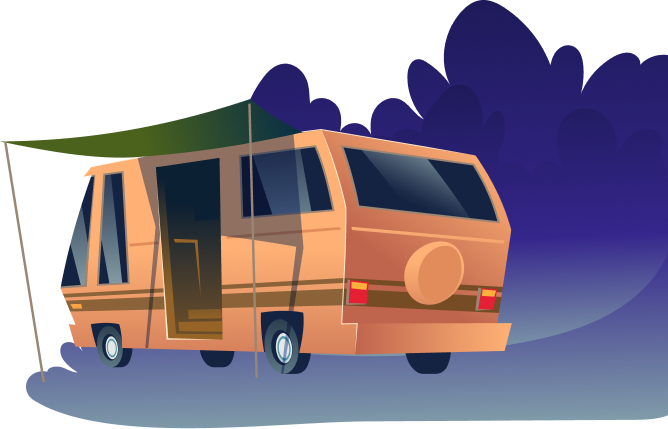




Camper Champ makes it easy to compare a range of campervan rental companies in Italy across multiple locations including Rome, Milan, Florence, Venice and others.
The cost of renting a campervan in Italy ranges between €90/day and €280/day for most vehicles. Popular brands include Vanitaly, Euromotorhome, RentEasy and McRent.

Discover Italy your way by choosing a class of camper that suits your travel needs.
Not all vehicles may be available. Use the search tool to check availability for your travel dates.
From the frosted peaks of the Alps and the sun-washed slopes of the Apennines to the golden beaches and turquoise waters along Italy’s neverending coastline, there’s always a spectacular backdrop for every stretch of your journey.
For first-time campers, the best all-around option for an Italian holiday is the Intermediate or Budget-friendly campervan. These come equipped with beds, lounges, and often bathrooms and kitchenettes, and they’re comfortable to drive along winding Italian roads. If you don’t need much space and seek a more rugged and natural experience, go for the compact 4WD Camper. The larger Luxury Class motorhomes have all the luxuries of a home but tend to cost more.
To compare all of the best campervan models from the most trusted rental brands, head to Camp Champ and find the perfect deal for your holiday. Italy is a magnificent country for a campervan road trip; here’s why:
Hotels are more expensive than campsites: Hotels, hostels, and AirBnBs all tend to be far more costly than a night in a campsite, especially if you locate a free sosta, or overnight rest stop.
You’ll want to have more flexibility: There are so many fascinating attractions in Italy that you’ll inevitably wish you could spend an extra day in one location. With a campervan, you’re able to adapt plans on the go, giving yourself the freedom to explore.
There are campsites inside the National Parks: Many of Italy’s 25 national parks encompass multiple towns and villages, so you can find a place to sleep in the heart of the country’s most scenic settings.
Driving is the best way to get around: If you want to visit multiple locations on your trip, the easiest way to reach everything would be by car. Instead of renting a car, get a campervan and turn every drive into an adventure!
While it’s possible to can camp in low-cost rest stops each night, there’s no replacement for the home comforts and unbeatable locations offered by these 10 campervan-friendly campsites in Italy:
Wild camping rules are determined by region, but it is generally prohibited in Italy and fines can be heavy (€100–500). If you are unsure about a certain region, check online or visit an information centre.
There are plenty of campsites in Italy, starting at around €20 per night.
To rent a campervan in Italy, you must have a valid Standard (Type B) Driving Licence. Most companies prefer drivers to be over 21 years old, but some companies will rent campervans to 18-year-olds. Depending on the rental company, you must also have one to three years of driving experience.
Note: policies vary from supplier to supplier. Always check the T&Cs for your rental.


